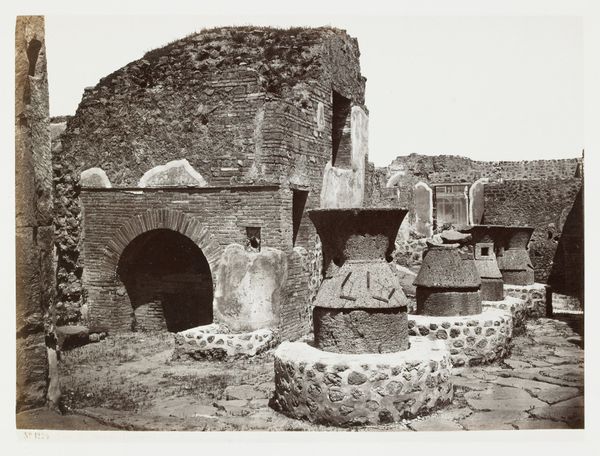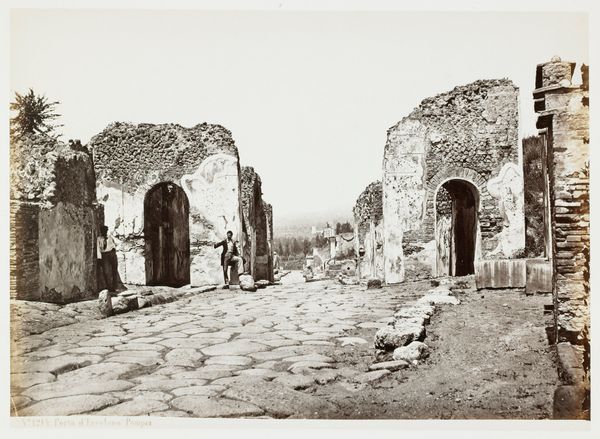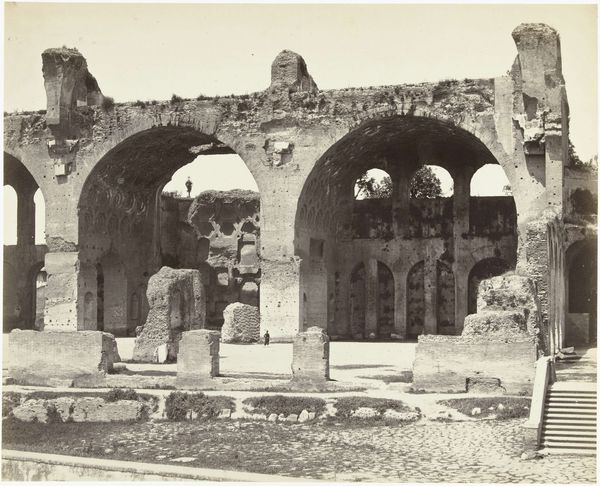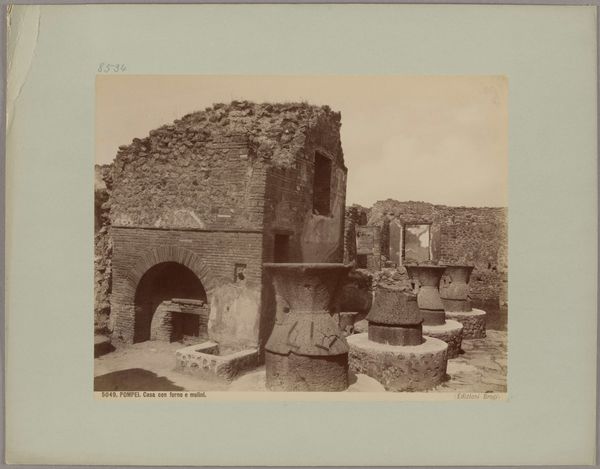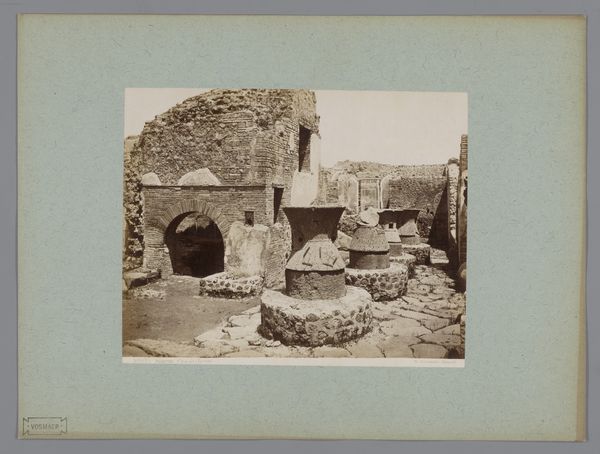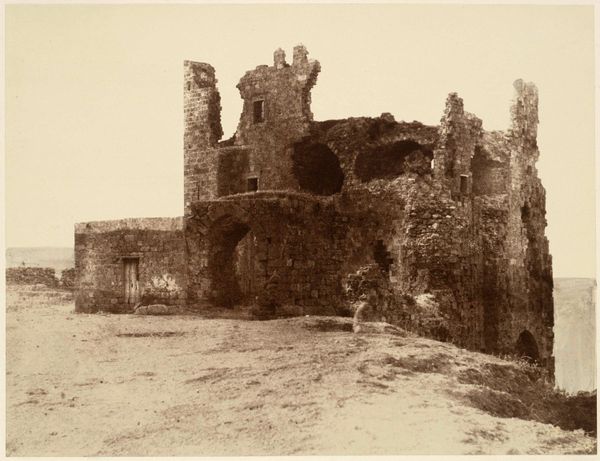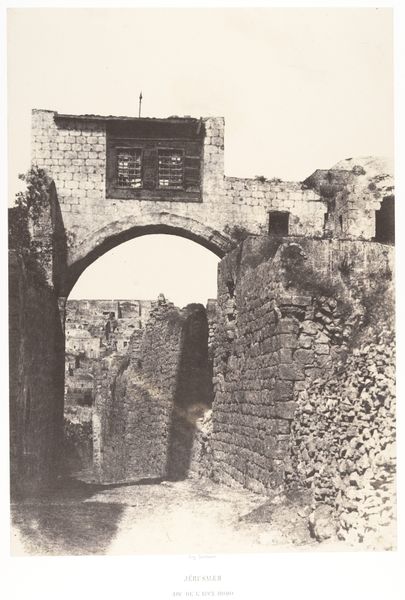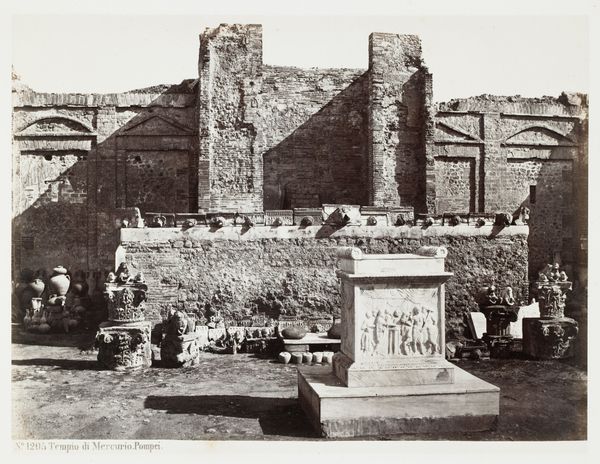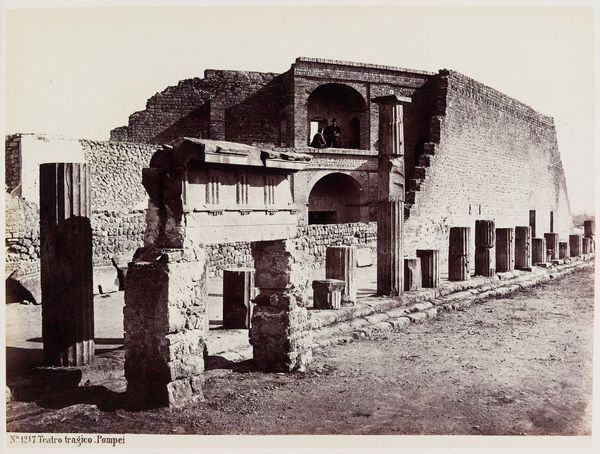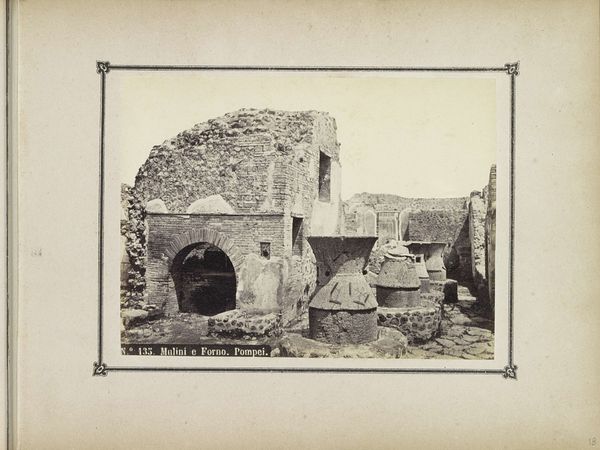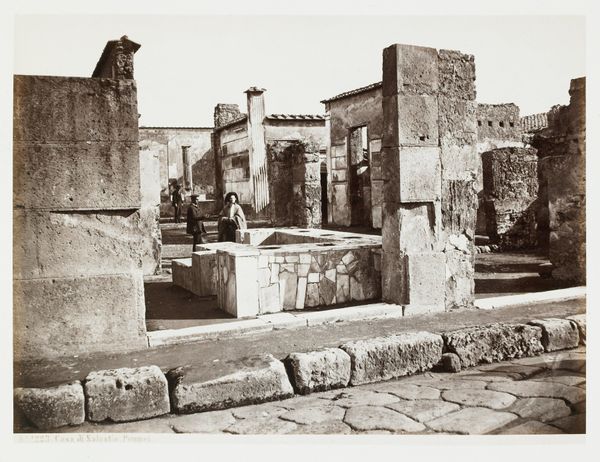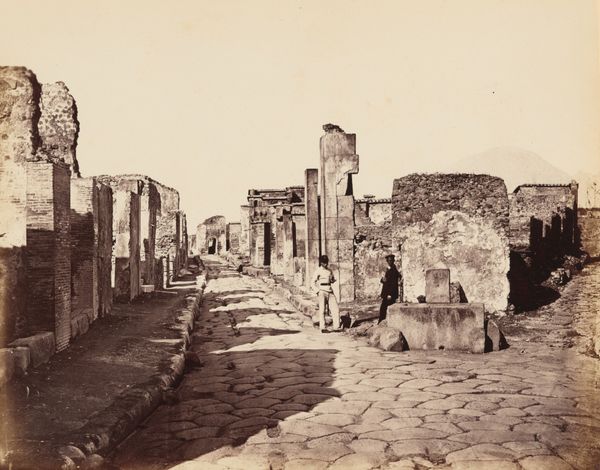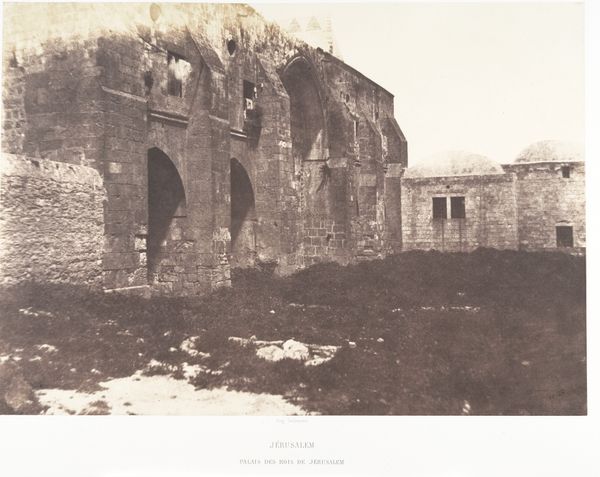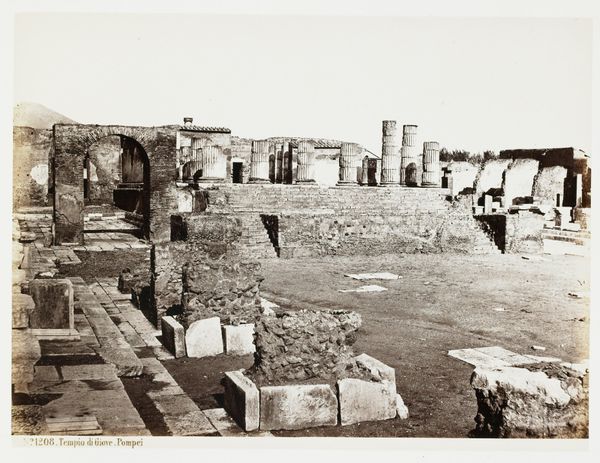
albumen-print, print, photography, albumen-print
#
albumen-print
#
excavation photography
#
still-life-photography
# print
#
landscape
#
photography
#
romanesque
#
ancient-mediterranean
#
monochrome photography
#
italy
#
albumen-print
Dimensions: 7 x 9 3/8 in. (17.78 x 23.81 cm) (image)
Copyright: Public Domain
Curator: Giorgio Sommer captured "Casa di Pornai," sometime between the 19th and 20th century using the albumen print technique. The work now resides in the collection of the Minneapolis Institute of Art. Editor: It’s instantly melancholy, isn’t it? All those greys and browns, like a faded memory clinging to stone. I feel a strong connection to this work. Curator: Indeed. The albumen print was instrumental in archaeology. Its affordability and reproducibility democratized visual records. Editor: It feels more like a stage set to me than just a record. I mean, look at the wear, the sheer manual labor evident in those stones and arches. Somebody invested so much craft into these structures. There is so much weight there. Curator: It's true. These structures stand as a testament to a highly organized social hierarchy and division of labor. Consider the logistical undertaking of extracting, transporting, and assembling the very stone materials that constituted an Ancient Roman city. It’s almost unfathomable by today’s standards of commodified construction. Editor: You know, seeing it as something built with so much deliberate, physical effort also makes the absence here all the more palpable. This silence of abandonment is almost deafening. There’s just nothing alive here; yet it stands—defiant, a ghost city, as if taunting Time itself. What remains feels deliberate, even hopeful. It begs the question of whether destruction can only pave the way for even more possibilities and innovation. Curator: In this "still life", there are the echoes of craft guilds, familial legacies of masonry. Albumen prints themselves, even, had a lifecycle; and were themselves vulnerable to light, humidity, and mishandling. Ephemeral and temporal records of time. Editor: It hits on the truth, the futility of permanence, and somehow also honors all that sweat equity too. A tricky balance. Curator: Well said. Editor: Precisely. Thanks for illuminating.
Comments
No comments
Be the first to comment and join the conversation on the ultimate creative platform.
